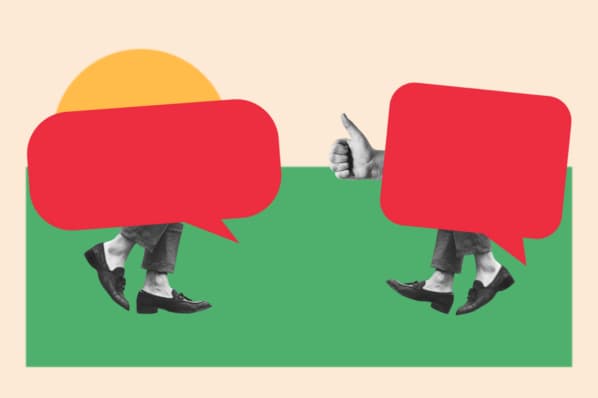

Salespeople often lose deals because they fail to accurately assess their prospects’ progress through the buyer’s journey.
Either they interpret mild expressions of interest as a desire to buy and rush to close before the prospect is ready -- or they miss their prospect’s buying signals and talk themselves out of the sale.
To avoid doing either, reps must learn to recognize the differences between eager buyers and those who need more time.
Identifying Mild Expressions of Interest
It’s all too easy for reps to get happy ears and interpret their prospect’s mild expression of interest as readiness to buy. But when buyers are in the consideration stage, they’re still evaluating their options. Their statements of mild interest are usually vague, noncommittal, and abstract. Statements signaling true buying intent -- which correspond to the decision stage of the buyer’s journey -- are more concrete, specific, and action-oriented.
Here are some things an uncommitted prospect might say:
- “That seems like it could be helpful.”
- “Do a lot of your customers use that feature?”
- “I remember one of my coworkers mentioned that.”
- “How does that work?”
- “I need to get approval from my supervisor.”
- “If you send me some materials, I’ll look them over.”
- “That’s interesting.”
Identifying True Buying Signals
Unlike the ambiguous expressions above, the following six categories of questions and statements usually come from buyers who are ready to take action.
1) Purchasing and Financing Questions
Price and discount-related questions can be misleading. If these questions come up at the beginning of the sales conversation, it’s possible the prospect is overly focused on cost rather than value. But if the prospect has gotten the opportunity to realize the product’s value, asking about price suggests they’re going to buy soon.
- “Do you offer financing?”
- “What’s the best price you can give me?”
- “Are there any discounts available?”
- “Is this a quarterly or monthly contract?”
2) Possessive Statements
It’s a good sign when prospects start talking about the product as though they already own it: Typically, this means they’ve mentally committed to buying.
Here are several examples of possessive statements:
- “This will fit in well with our current system.”
- “Andrea would probably be the point person for this process.”
- “I think we’d send four employees to start.”
- “I’d like Jonathan to handle the training sessions.”
- “The app will come in handy when any of us are on the road.”
3) Service and Delivery Dates
Once a buyer has moved into the decision stage and determined the specific solution they’re interested in, they start thinking about logistics: When can they receive the product or have it installed? How will it get to them? Disinterested or less committed prospects, on the other hand, are far less concerned with details.
For that reason, reps should keep their ears perked for questions like:
- “How long would implementation take after we sign?”
- “Would it be possible to get [the product] by January?”
- “What are your delivery options?”
- “For a company of our size, how soon do you think we could get up and running?”
4) Expressions of Desire
To motivate prospects to take action, reps should paint a picture of a better future. Salespeople will know this picture has taken hold if prospects start discussing it of their own accord.
For instance, a prospect who’s dreaming of a better future might say:
- “This tool would help us do X faster.”
- “It would be great to have this for [project].”
- “I could definitely see this coming in handy when I want to do Y.”
- “Our team would love having this for [task].”
5) Risk-Minimization Questions
Sometimes a prospect is leaning toward buying but wants to cover their bases first. In these cases, they’ll ask one or two questions that’ll help them feel more comfortable with the purchase.
These questions usually sound similar to:
- “If I decide I don’t like the product, what happens?”
- “Do you have a satisfaction-guaranteed policy?”
- “What’s your customer support like?”
- “How long does your warranty last?”
6) Next Step Questions
Successful salespeople lay out clear next steps at every stage of the process. However, prospects who are eager to buy will often preempt this conversation. Reps should be prepared to answer “next step” questions such as:
- “So, if I’m interested what happens next?”
- “Are you available to meet with the other members of the buying committee?
- “Where do we go from here?”
- “What can I do on my end to facilitate the process?”
Recognizing the difference between mild interest and a desire to buy helps salespeople align their sales process to the buyer’s journey. Rather than trying to force a sale when their prospect is in the consideration stage or or talking an eager prospect out of the purchase, reps can time their responses to their prospect’s mindset.






![Confused About I.E. vs. E.G.? When to Use Each [With Examples]](https://blog.hubspot.com/hubfs/ie-vs-eg-fi%20%281%29.jpg)


